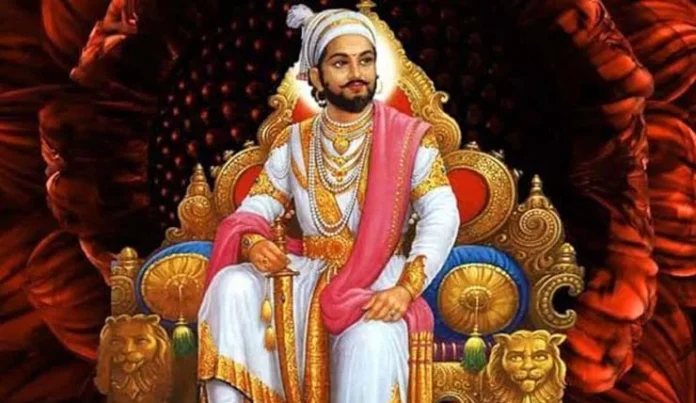Legendary Maratha leader Chhatrapati Shivaji (1630–1680) was a member of the Bhonsle clan that carved out an enclave from the declining Adilshahi sultanate of Bijapur, which formed the genesis of the Maratha Empire. In 1674, Shivaji was formally crowned as the Chhatrapati of his realm in Raigad Fort.
Shivaji belonged to the prominent nobles whose ancestral estates were situated in the Deccan, in the realm of the Bijapur sultans. He found the Muslim oppression and religious persecution of the Hindus so intolerable that since he was 16 years old, he believed that he was the divinely-appointed instrument of the cause of Hindu freedom.
In his kingdom, the Maratha leader established a competent and progressive civil rule with well-structured administrative organisations. He revived ancient Hindu political traditions, court conventions and promoted the usage of the Marathi and Sanskrit languages, replacing Persian in the court and administrative system.
In 1646, the 16-year-old Shivaji seized the Torna Fort taking advantage of the confusion prevailing in Bijapur and found a large treasure there. In the following two years, Shivaji seized several important forts near Pune, including Purandhar, Kondhana and Chakan. He brought Supa, Baramati and Indapur as well under his direct control.
Shivaji used the money seized at Torna to build a fort in Raigad, which served as his capital for over a decade. After this, Shivaji turned to Konkan and took possession of the important town of Kalyan. During 1649–1655 Shivaji slowed down his military conquests and quietly consolidated his gains.
Escape from Mughal custody
In 1666, Aurangzeb summoned Shivaji to Agra, along with his nine-year-old son Sambhaji. Aurangzeb planned to send Shivaji to Kandahar, now in Afghanistan, to consolidate the Mughal empire’s north-western frontier.
However, on May 12 in 1666, Shivaji was made to stand in the court alongside relatively low-ranking nobles who were defeated by him in the earlier battles. Shivaji took offence and stormed out of the court. But he was immediately captured and placed under house arrest. Ram Singh, son of Jai Singh, was in charge of the custody of Shivaji and his son.
Shivaji was in a perilous position under house arrest. Aurangzeb’s court debated whether to eliminate him or continue to employ him. Jai Singh, having assured Shivaji of his personal safety, tried to influence Aurangzeb’s decision. Shivaji in the meantime hatched a plan to escape. He sent most of his men back home and asked Ram Singh to withdraw his guarantees to the emperor for his safe custody, and surrendered before the Mughal forces.
After that, Shivaji pretended to be ill. As penance, he began delivering sweets in large baskets for the Brahmins and poor people. On August 17, 1666, Shivaji escaped along with his son Sambhaji by getting smuggled out jail hidden in two separate large baskets. Both left Agra after that. The peace between Shivaji and the Mughals lasted until 1670.
Bloody flux
Shivaji died on April 3, 1680, at the age of 50, on the eve of Hanuman Jayanti. The cause of his death is disputed. British records state that he died of bloody flux being sick for 12 days. In a contemporary work in Portuguese, the Biblioteca Nacional de Lisboa, the recorded cause of Shivaji’s death is anthrax. However, Krishnaji Anant Sabhasad, author of Sabhasad Bakhar, the biography of Shivaji, has mentioned fever as the cause of Shivaji’s death.
– The writer is a senior journalist and media consultant. The views expressed are of the writer and do not necessarily reflect the views of Raksha Anirveda.






